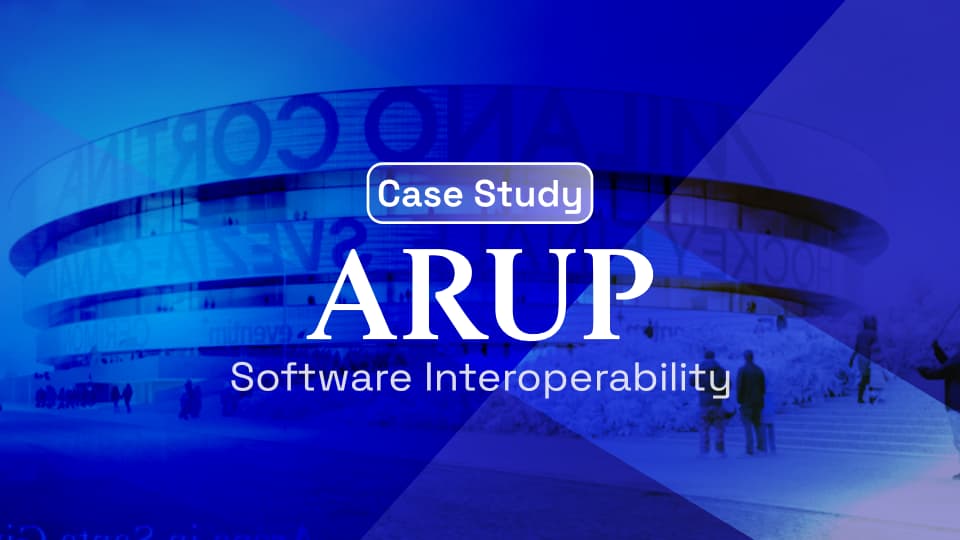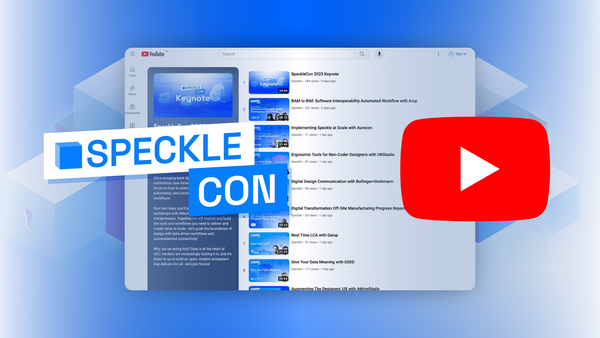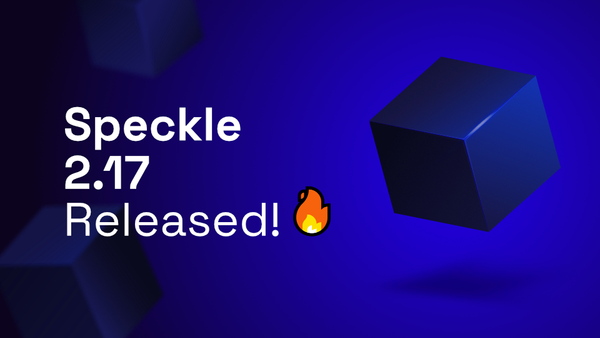Introducing Arup
Arup is an international design and engineering practice with a strong focus on cross-discipline collaboration, meaning they use various design and analysis tools, striving to automate boring tasks to reduce errors and data losses. Before Speckle, Arup faced two key challenges:
- Automating workflows
Allowing interoperability between different software and tools is not always easy or possible. Most of these applications require a license and rely on proprietary data formats. To access model data, every member of the Arup team needs the relevant software installed, leading to less efficient units.
- Accessing and managing data
How do you describe a building in a database table? Buildings are complex, and projects are dynamic. Design and construction data is primarily relational, and despite this, there is no canonical way of structuring this data.
Every software operates with a different data model. In addition, the way data is structured, stored, and accessed can vary significantly based on the design stage, the discipline, the project type, and even the project location. This creates lots of frictions across projects in the organisation.
Boosting Interoperability with Speckle
"Speckle provides an open-source data platform that everyone can use and extend." (Arup)
Speckle allows simple and comprehensive interoperability between different authoring tools. On top of that, it offers an independent open-source environment to access data and geometry from these applications.

It implements a flexible and extensible data framework that supports both pre-defined data structures as well as custom dynamic properties. Hence the information is stored in a suitable format to describe complex projects. Arup leveraged Speckle in various ways to increase productivity and efficiency across multidisciplinary teams. Let’s explore three initiatives.
1. Building a Custom Rhino App Using Speckle
This app is an example application of what Arup aimed to achieve using Speckle. Internally referred to as “DIY BIM” or “Tagging Script,” this custom Rhino app enables users to assign custom geometries to properties in Rhino. It is comprised of three main components:
- Rhino Template
A predefined (but flexible) Rhino template that defines the layer hierarchy and naming conventions to be processed by the app.

- Central Data Schema
The system relies on a custom data schema stored in the cloud that defines the data structure, all the available “families” and attributes/properties.

- User Interface
The third component of the system is the smart user interface that reads the Rhino template and the library file to create a user-friendly environment that does not require any scripting skills to be used.

Key projects utilised this Speckle-powered app, including:
- The New Milano Santa Giulia Arena in the city of Milan (Olympic Winter Games in 2026)

- The refurbishment of Firenze Stadium: intervention foresees partial demolition and reconstruction of new structures (museum and auditorium)

These models were complex, with lengthy roof structures and a large number of elements, ranging from 4,000 to 7,000 elements. The time and effort spent remodeling and reassigning new properties caused delays in information sharing between the team, with a potential loss of information too.

The Arup team was asked to design a new way of creating the geometry of nodes by automating the process of rendering the geometry in the final drawings.
2. Introducing Building Analytical Model (BAM)
BAM embeds a fully digital workflow to collect and streamline all the geometries in an automated way. Via Speckle, the geometries are assigned to families and imported into Revit. The time estimated by the modelers was nine days. Thanks to Speckle, this was reduced to 12 minutes.

::: tip
Watch Benedetta demo how this works:
:::
3. Enabling Collaboration Across Multidisciplinary Teams
Having a tool like Speckle increased collaboration across multidisciplinary teams at Arup. In fact, such teams are diverse with different experiences, ranging from a few months to 15-20 years, there is a lot of people with different skillsets, different ideas of working, and different tools that they use. That’s where Speckle - with its Connectors - shows its value in enabling different teams, companies, and consultants to deliver a superior product. Not to mention the massive amount of data involved in these projects, tools like Speckle become really key to delivering.
“Speckle is but one tool in our tool chest but makes a world of difference in our projects.” (Arup)

”I don’t know about you but I hate wasting time on manual tasks”, says Elise, who wishes to spend more time focusing on the things that are more challenging to her as a structural engineer. The above process encouraged Elise and her team to think about different solutions to present to their clients, while focusing on optimal solutions and ultimately, benefitting the client who gets the best results.
The team came up with a novel approach, and Speckle sits at the center of it. The below modular workflow enables Arup to connect with the software they would not be able to connect to otherwise. This complements existing plugins and powerful design engines and checks to perform team calculations, leading to significant time and effort savings.

::: tip
Watch Elise demo this approach:
:::
Conclusion
Leveraging Speckle to drive impact internally is proven to be valuable in both Italy and Australia, driving productivity across multidisciplinary teams. Following the DIY BIM, Arup was shortlisted at the TechFest in the category of best use of technology for design efficiency, showcasing their innovative approach to drive efficiency across the company.
Subscribe to our newsletter if you'd like to hear from more AEC leaders:



